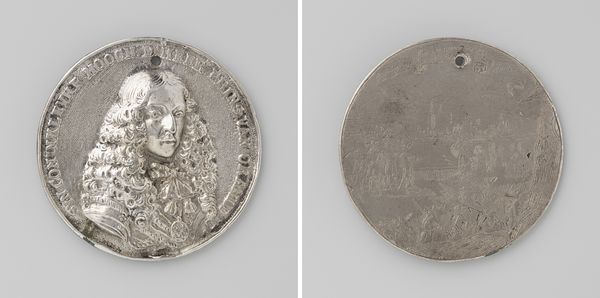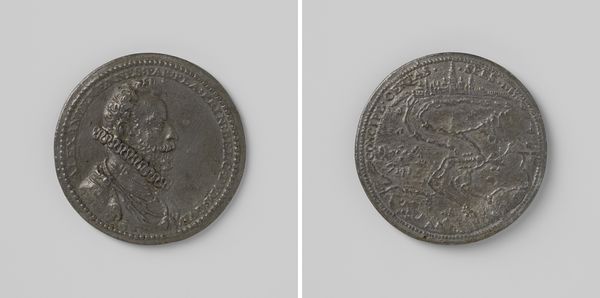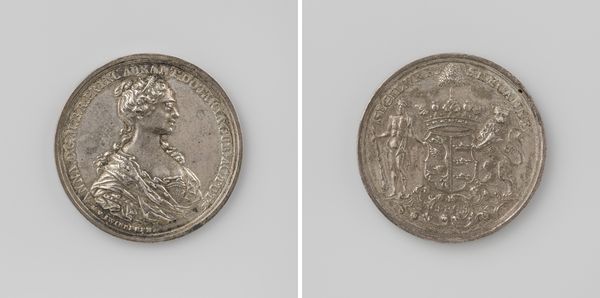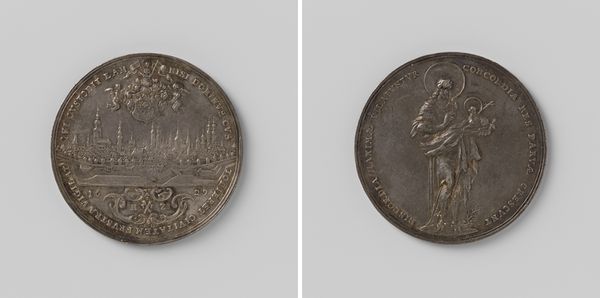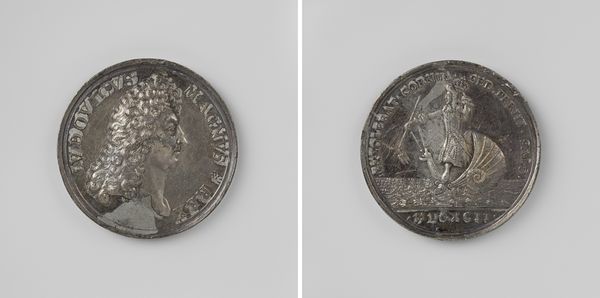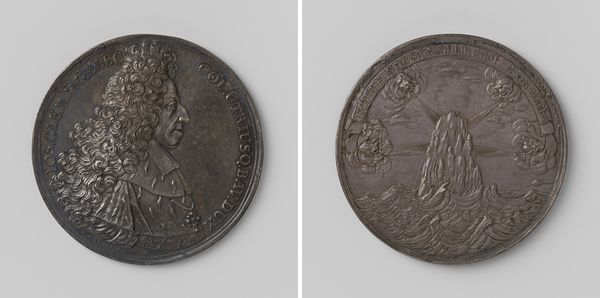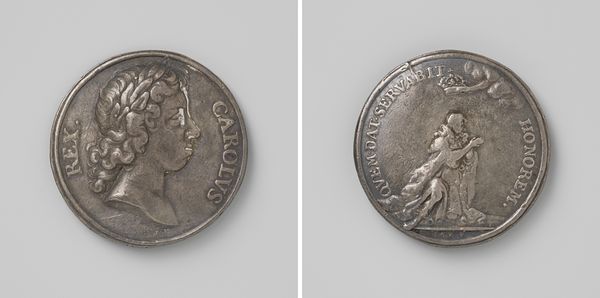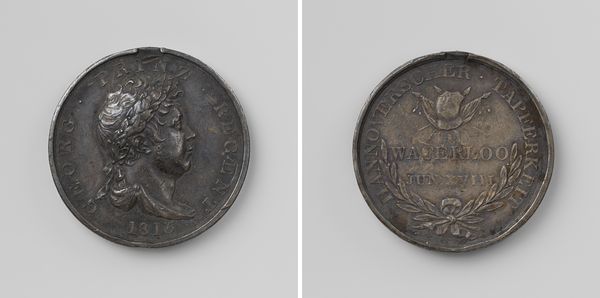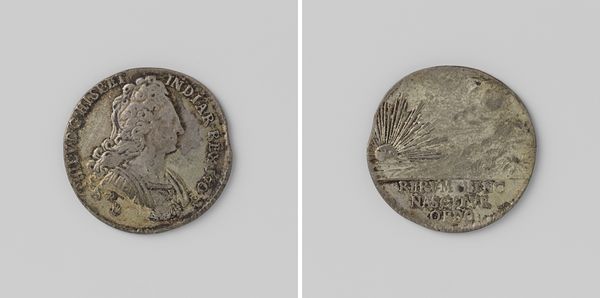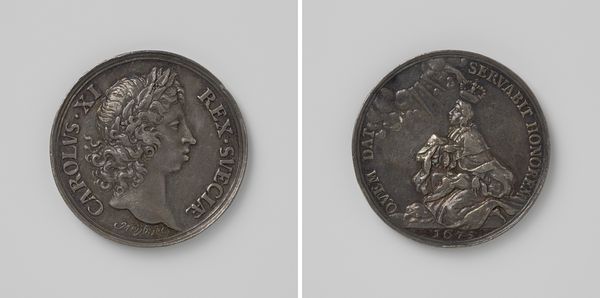
metal, relief, bronze, sculpture
#
portrait
#
baroque
#
metal
#
relief
#
bronze
#
sculpture
Dimensions: diameter 4.4 cm, weight 25.33 gr
Copyright: Rijks Museum: Open Domain
Curator: This bronze relief, made around 1687, depicts Coenraad van Beuningen, who served as burgomaster of Amsterdam six times. The metal is cool to the touch; its weight immediately implies status, doesn't it? Editor: Absolutely. And even in monochrome, I'm struck by a sense of quiet austerity, a solemnity almost, emanating from this portrait. Curator: I'd agree, given that portrait medals like this often commemorate an important accomplishment or acknowledge service. The creation process for such works involved sculpting a model, and using it to create a mould to cast metal works for repeated production. Beuningen likely commissioned multiple casts to gift to his peers or members of his family, or to offer for purchase on the open market. Editor: Consider, too, the social implications; it represents the aspirations and authority claimed by a bourgeois elite on the cusp of an era marked by immense social and economic inequality, fueled by the Dutch East India Company. Curator: Yes, such relief work exemplifies Baroque visual strategies used for displaying status; though, as portraiture, the success of the object largely depended on how effectively the moldmaker, perhaps not the original model-maker, translated the initial portrait in wax or plaster. If he sought numerous recreations from the mould, imperfections would arise. Editor: Right, it reminds us to think about how this work speaks to Dutch republicanism and its relationship to power and portraiture, subtly nodding towards absolutist aesthetics dominant in France while consciously embracing Dutch identity and commerce. There are different narratives, perhaps contrasting beliefs about representation, embedded in this small metal disc. Curator: True, the material properties add meaning too. The coolness, the permanence, the slight shimmer… bronze conveyed power and wealth beyond its weight in metal, signaling social rank to contemporaries in a culture centered on mercantilism. The medal had an intended tactile exchange; wealth made real. Editor: So, the cool precision is no accident, nor is its reflective quality: they're intended to create dialogue about civic ambition in the Netherlands’s Golden Age and what kind of face a politician must assume to capture it. I am leaving now, ready to reassess medals as not only commemorative but complex artifacts, imbued with identity. Curator: Indeed, leaving one to appreciate the layered craft embedded in this piece and prompting thought about who owned it and in what social situation they would show off that particular item.
Comments
No comments
Be the first to comment and join the conversation on the ultimate creative platform.
